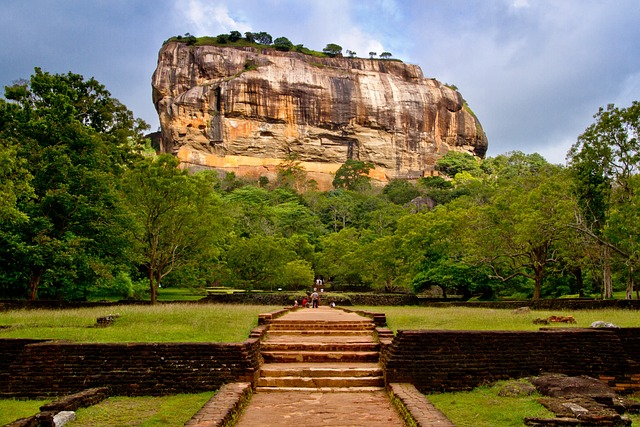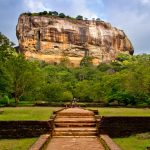Sigiriya, also known as the Lion Rock Fortress, is a fascinating archaeological site located in the northern Matale District of Sri Lanka. This iconic fortress, built in the 5th century AD by King Kashyapa, is a UNESCO World Heritage Site and one of the most popular tourist attractions in the country. In this article, we will take a closer look at the history, architecture, and significance of Sigiriya.
The History of Sigiriya
Sigiriya has a rich and complex history that spans over 1,500 years. The fortress was originally built as a royal palace complex by King Kashyapa, who ruled the kingdom of Anuradhapura from 477 to 495 AD. According to historical records, Kashyapa seized power by killing his father, King Dhatusena, and usurping the throne from his brother, Prince Moggallana. Fearing retribution from his brother, Kashyapa moved the royal capital to Sigiriya and built the fortress to protect himself from external and internal threats.
It was abandoned after Kashyapa’s death and was used as a Buddhist monastery until the 14th century. The site was rediscovered by British archaeologist John Still in 1907 and was later declared a UNESCO World Heritage Site in 1982.
Architecture
Sigiriya is famous for its stunning architecture, which combines sophisticated engineering with artistic beauty. The fortress is built on a 200-meter-high rock plateau and is surrounded by a moat, ramparts, and water gardens. The entrance to the fortress is through a massive lion-shaped gateway, which has now been destroyed. The summit of the rock contains the remains of the royal palace complex, including the throne platform, the mirror wall, and the frescoes.
The mirror wall is a highly polished surface that was used to reflect the images of the surrounding landscape. The wall is decorated with graffiti from ancient visitors, some of which date back to the 8th century. The frescoes are a series of colorful paintings that depict female figures in various poses. The frescoes are considered one of the finest examples of ancient Sri Lankan art and are a testament to the creativity and skill of the craftsmen who built it.
The Significance of Sigiriya
Sigiriya is more than just a fortress. It is a testament to the ingenuity and creativity of the ancient Sri Lankan civilization. The fortress is a symbol of the power and grandeur of the kingdom of Anuradhapura, and it represents a unique blend of art, architecture, and engineering. It is also significant because of its cultural and historical importance. The frescoes and graffiti on the mirror wall provide valuable insights into the social and cultural life of the ancient Sri Lankan people.
Today, Sigiriya is a popular tourist destination, attracting visitors from all over the world. The site is a testament to the enduring legacy of the ancient Sri Lankan civilization and serves as a reminder of the rich and diverse cultural heritage of the country.
Conclusion
Sigiriya is a fascinating archaeological site that has captured the imagination of people for centuries. Its stunning architecture, rich history, and cultural significance make it one of the most important landmarks in Sri Lanka. Whether you are a history buff, an architecture enthusiast, or simply a curious traveler, Sigiriya is a must-visit destination that should be on your travel bucket list.
In conclusion, Sigiriya is an ancient rock fortress that is both awe-inspiring and educational. Its complex history, stunning architecture, and cultural significance make it a unique destination that is worth exploring.
FAQ
The best time to visit Sigiriya is during the dry season, which runs from May to September. During this time, the weather is warm and dry, and the skies are clear, making it perfect for exploring the site.
Yes, there are certain restrictions when visiting Sigiriya. Visitors are not allowed to bring food, drinks, or plastic bags into the site. Additionally, climbing to the top of the fortress is not recommended for those who are pregnant or have heart or respiratory conditions.
Yes, it is recommended to hire a guide to explore Sigiriya. Guides can provide valuable insights into the history and architecture of the site and can help visitors navigate the complex. Guides can be hired at the entrance of the site.




